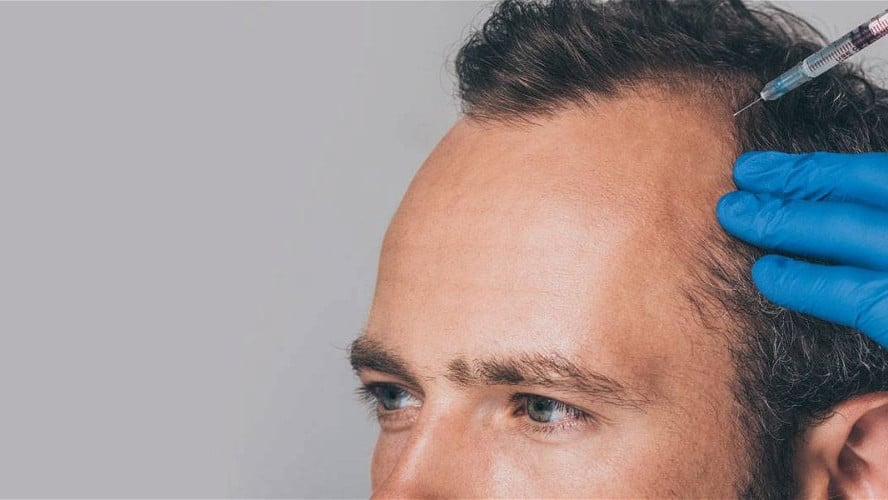
The medical history will provide valuable data such as the start time of hair loss, the rate of development, the type and extent of hair loss, possible coexistence of pathological conditions associated with hair loss (e.g. hypothyroidism, autoimmune diseases, anemia, etc.) Moreover, the hereditary history that may exist is crucial.
Especially in the case of androgenetic alopecia, the existence of a positive inheritance history on the part of the father, the mother or both of them is considered to lead to a diagnosis and to a large extent determines its future development. In dubious cases, especially in women, in very young people or in special cases of alopecia (eg cicatricial alopecia), the diagnosis and the selection of the appropriate treatment can be aided by performing specific examinations such as the classical trichochogram, the phototrichogram and the blood tests.
Additionally, today we can determine the genetic profile of a patient that suffers from hair loss. This is possible through the study of dozens of genes related to the hair loss process via a specific genetic examination of the patient’s DNA. Hair treatment can be divided into two major categories: conservative and surgical treatment.
Hair Loss Treatment with Medications & Conservative Therapies
Medications that fight hair loss are:

- Minoxidil that extends hair’s anagen phase.
- Topical application of corticosteroids to the scalp. The aim is to fight inflammation that causes follicles’ degeneration. Non-specific treatment is mainly applied in hair loss cases of vague aetiology in which there is no causative treatment, such as in cases of diffuse alopecia, cicatricial alopecia or alopecia areata.
Conservative treatments that fight hair loss are:

- Treating hair loss with autologous growth factors is a new, very promising treatment based on the healing and growth powers of the patient’s body. The patient’s blood, being rich in active ingredients, is stimulated resulting in the production of protein growth factors, which in turn cause cells’ activation. This fact results in the production of new cells and also in the growth of hair follicles.
- Treating hair loss with laser LLLT can be applied successfully in cases of incipient or intermediate androgenetic alopecia, as well as in cases of diffuse alopecia. The treatment acts by improving topical blood supply and through increased production of energy in the hair follicles’ cells, eventually resulting in hair’s improved nourishment.
Conservative Hair Loss Treatments
Supportive to the conservative treatments are a number of products, mainly shampoos, lotions or ampoules with nutrients, nutritional supplements with vitamins, trace elements, amino acids, etc. Generally, the efficacy of these elements in the treatment of hair loss is controversial, but it is thought that a proper and balanced diet, rich in fibers and vitamins mainly from group B, trace elements like zinc and natural products such as aloe, contribute to hair’s proper nutrition and health.
Also, in people with sensitive, thin and weak hair with a hereditary hair loss history, it is generally recommended to use mild, pH-neutral shampoos suitable for daily use.




